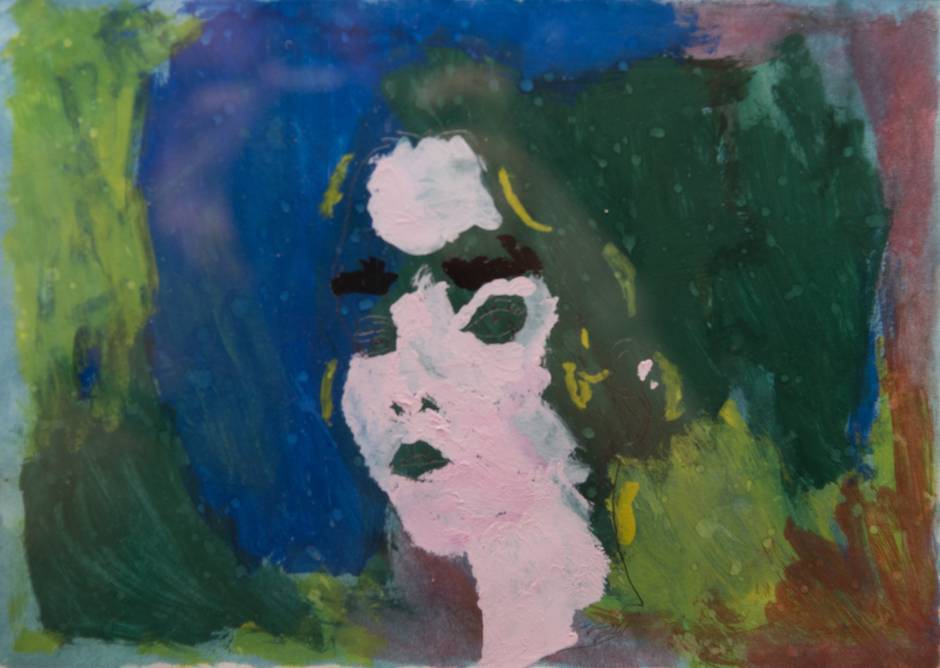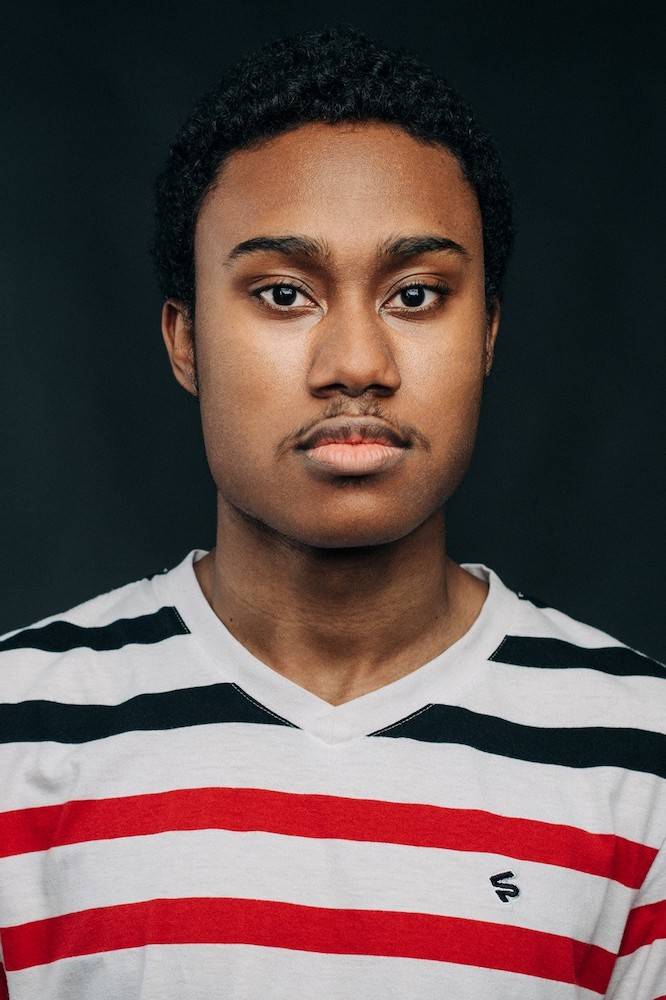DJ Savarese responds to "Wood Nymph" by Malcolm Corley
Posted on May 3, 2021

Wood Nymph
by DJ Savarese
Her eyes and mouth are leaves.
If she could talk, she’d melt, I think,
or at least evaporate.
When the tree dies,
so does the Hamadryad--
in this case, Aigeiros,
denizen of the black poplar.
To say that she is bonded to her tree
is to believe too much in the spirit
of distinction: she is the tree,
that triangular, tooth-leafed cottonwood.
When Erysichthon cut down
Demeter’s grove,
Limos bore like a beetle into his stomach,
becoming the need to eat.
And eat Erysichthon did
until he ate himself.
No chainsaw is ever happy.
Like the wood nymph, I live inside
the grain of speech, the would
of warning:
he who harms my sister
shall die of insatiable hunger.

David James “DJ” Savarese (www.djsavarese.com) is an artful activist, public scholar, and practicing optimist. His publications include a chapbook, A Doorknob for the Eye; a “Notable” Best American Essay, “Passive Plants;” an insight piece entitled “Coming to My Senses;” and poems in various literary journals. He is the co-producer, narrative commentator, subject, and poet of the Peabody award-winning documentary Deej: Inclusion Shouldn’t Be a Lottery and founded Listen2Us: Writing Our Own Futures as an Open Society Foundation Human Rights Initiative Youth Fellow. His autoethnographic study “Unearthing the Tools (and Concepts) That Bury Us,” is forthcoming in a scholarly anthology in fall 2021. When he’s not writing, he teaches and presents nationally on a range of topics. Before moving to Iowa City, he graduated from Oberlin College ’17 with a double major in Anthropology and Creative Writing.

At the age of three, Malcolm Corley (b. 1999) was diagnosed with autism. At about the same time, he began to draw the sketches from the TV show, Blues Clues. Recreations of Dr. Seuss’s illustrations came next, some of which he drew from memory.
In February, 2019, his sketch “Jazz Hands” was published in Hot Metal Bridge, and eight of his portraits were published in Up the Staircase. “Kiana” appeared on the Fusion Art website in March, 2019; two months later, “Closet” was published in Penn Review. His art has been shown at the Ware Center in Lancaster, PA, and two juried international exhibits/sales: Art of Possibility at the Courage Kenny Rehab Center in Minneapolis and the 2019 and 2020 Art Ability Exhibitions at Bryn Mawr Rehab Hospital, where one of his pieces received an honorable mention prize. In addition, he has had solo shows at the Winter Center and the Emerald Foundation, also in Lancaster. He is a nominee for Lancaster PA’s 2021 Black Artist Waystation Project.
“Untitled #1,” an acrylic painting Malcolm created in AP Art class at Hempfield High School, was one of 15 works chosen by The Kennedy Center’s 2019 VSA program. Malcolm was the youngest artist to be recognized, and the only one with no post-secondary art training. “Untitled #1” was also chosen, along with “Hoodie Self-portrait,” for the CRIP Ritual art show in Toronto, Ontario, currently scheduled for January, 2022. “Untitled #1” formed the “T” in an installation of the word UNITY at the Kennedy Center from January-February, 2021.
Process Notes
Mal’s artwork is all about relating, relationships. Underlying many of his pieces is the understanding that we are of— not in—our environment. At the time I began engaging with Mal’s work, I was reading a lot of scholarly, theoretical work: Staying with the Trouble and Arts of Living on a Damaged Planet—volumes of dense prose. I marveled at Mal’s ability to capture these very same ideas in paint, shape, and color on a single page and wondered if I could do the same in a single page of poetry.
I fell in love with Mal’s “Wood Nymph” the moment I laid eyes on her. She is our ideal selves—interdependent, enmeshed, inseparable, a fluid mix of land-and-sea, tree-and-human. She reminds us we are all matter and therefore should care for each other. And yet she is also a character from Greek mythology, the very root of our own human-centric bias toward nature. A search for the genesis of our greedy proprietorship led me to Erysichthon, whose name onomatopoetically mimics the hard, coarse squeal of the chainsaw. I began associatively entangling these seemingly disparate details into my poem.